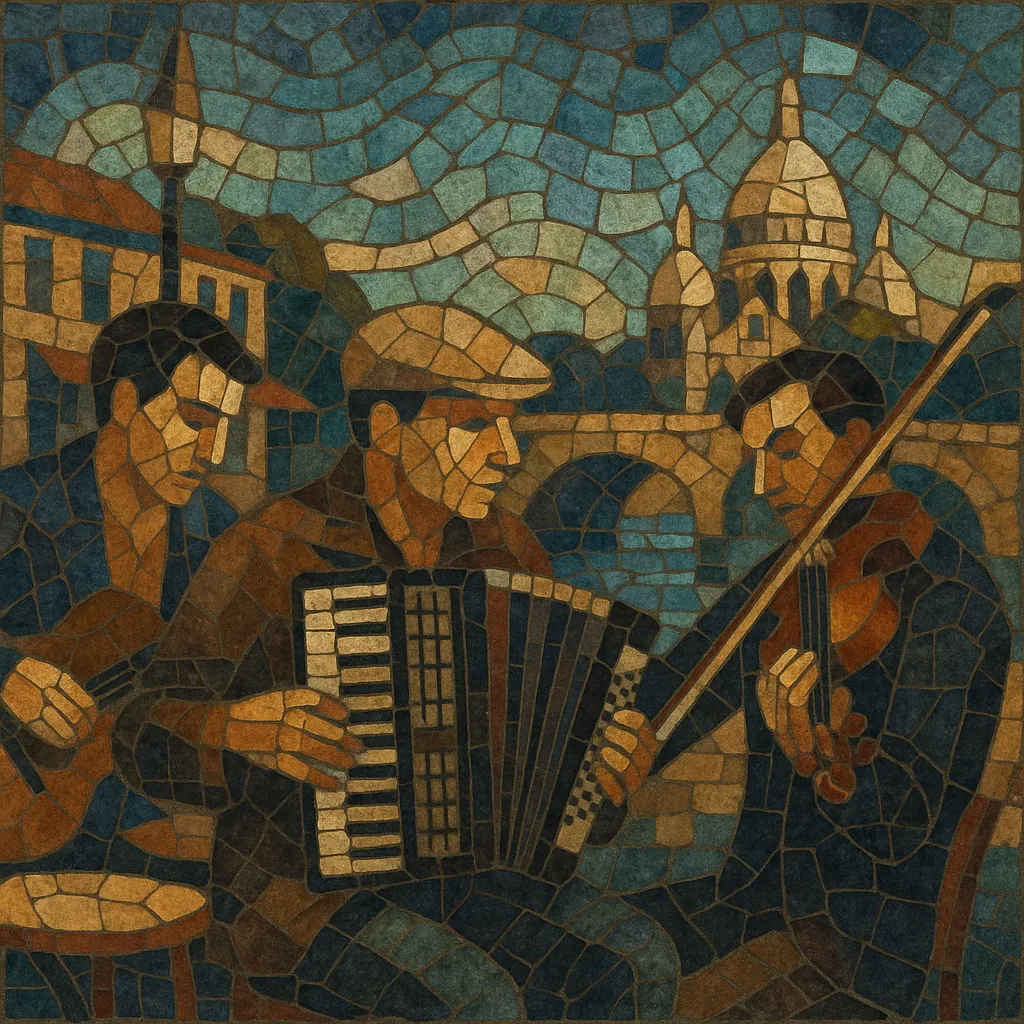French jazz is the French branch of jazz that took root in Paris and other urban centers after World War I, when African American musicians and touring bands introduced the music to a receptive café and cabaret culture. It blends American jazz idioms with French musical sensibilities, notably chanson, musette waltzes, and a refined classical ear for color and melody.
Its sound ranges from the acoustic swing of the 1930s Hot Club style (guitar- and violin-led ensembles) to postwar bebop, cool and modal currents, free improvisation, and later fusions with chanson and electronic music. Hallmarks include lyrical, song-like themes, supple swing feels, elegant harmonic voicings, and, in some strands, the distinctive "la pompe" rhythm of manouche guitar and the timbre of accordion and violin.
Today, French jazz encompasses both traditional and forward-looking approaches: intimate acoustic combos, orchestral and filmic jazz, and hybrid forms that intersect with nu jazz, electro-swing, and contemporary European improvisation.
After World War I, Paris became a magnet for African American musicians and touring dance bands, introducing hot jazz and swing to vibrant cabarets and cafés. French audiences embraced the music, and local players internalized its blues phrasing and syncopation while filtering it through chanson and musette traditions. In 1934, guitarist Django Reinhardt and violinist Stéphane Grappelli formed the Quintette du Hot Club de France, establishing a uniquely French, all-strings swing idiom that became known worldwide and set a template for acoustic small‑group jazz in Europe.
Despite restrictions during the Occupation, jazz persisted in underground and studio contexts. After the war, Saint‑Germain‑des‑Prés blossomed with clubs and intellectual cafés where bebop and cool currents took hold. French musicians such as Martial Solal, René Urtreger, and Barney Wilen explored modern harmony and rapid tempos, often collaborating with visiting American artists. Jazz began crossing into literature and cinema (e.g., Boris Vian’s scene), and French composers and arrangers cultivated a cinematic jazz language that would influence film scores.
From the 1960s, French jazz absorbed modal and free approaches, with a strong emphasis on timbre, counterpoint, and chamber‑like interplay. Improvisers such as Michel Portal and Henri Texier developed a European voice—less blues‑centric, more focused on color, space, and folk/classical resonances—while the manouche lineage continued through players like Babik Reinhardt and, later, Biréli Lagrène. The period also saw expanded roles for clarinet, accordion, and violin, and deeper engagements with contemporary classical techniques.
By the 1990s and 2000s, French jazz intersected with house, trip‑hop, and downtempo, yielding nu jazz and electro‑acoustic projects alongside acoustic traditions. Artists and bands developed a polished production aesthetic while retaining improvisational core values. Today the scene spans festivals, conservatories, and independent labels, sustaining parallel currents: Hot Club revivalism, post‑bop and avant‑garde experimentation, cinematic orchestration, and club‑aware fusions that continue to export a distinctly French jazz sensibility.


